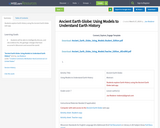
Students explore Earth History using the Ancient Earth Globe web app.
- Subject:
- Earth and Space Science
- Geology
- Material Type:
- Activity/Lab
- Date Added:
- 03/27/2019

Students explore Earth History using the Ancient Earth Globe web app.

This course introduces students to climate studies, including beginnings of the solar system, time scales, and climate in human history. It is offered to both undergraduate and graduate students with different requirements.
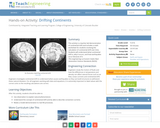
This activity is a teacher-led demonstration of continental drift and includes a math worksheet for students involving the calculation of continental drift over time. Students will understand what continental drift is, why it occurs, and how earthquakes occur because of it.
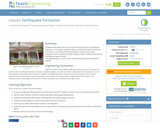
Students learn about the structure of the earth and how an earthquake happens. In one activity, students make a model of the earth including all of its layers. In a teacher-led demonstration, students learn about continental drift. In another activity, students create models demonstrating the different types of faults.
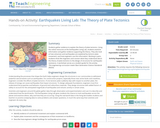
Students gather evidence to explain the theory of plate tectonics. Using the online resources at the Earthquakes Living Lab, students examine information and gather evidence supporting the theory. They also look at how volcanoes and earthquakes are explained by tectonic plate movement, and how engineers use this information. Working in pairs, students think like engineers and connect what they understand about the theory of plate tectonics to the design of structures for earthquake-resistance. A worksheet serves as a student guide for the activity.
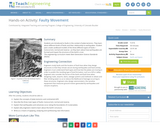
In this activity, students are introduced to faults. They will learn about different kinds of faults and understand their relationship to earthquakes. The students will build cardboard models of the three different types of faults as they learn about how earthquakes are formed.

A new interactive map created by Ian Webster, curator of the internet's largest dinosaur database, places our planet's ever-shifting surface into stark relief. Using plate tectonics and paleogeographic maps by C.R. Scotese of the PALEOMAP Project, Webster's map can show you how the earth under your current address changed over the course of some 750 million years.

Letters and Science C70Y / Earth and Planetary Science C20: Introduction to earthquakes, their causes and effects, Fall 2012. General discussion of basic principles and methods of seismology and geological tectonics, distribution of earthquakes in space and time, effects of earthquakes, and earthquake hazard and risk, with particular emphasis on the situation in California.
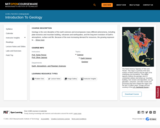
This undergraduate level course presents a basic study in geology. It introduces major minerals and rock types, rock-forming processes, and time scales; temperatures, pressures, compositions, structure of the Earth, and measurement techniques; geologic structures and relationships observable in the field; sediment movement and landform development by moving water, wind, and ice; crustal processes and planetary evolution in terms of global plate tectonics with an emphasis on ductile and brittle processes.
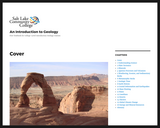
This text is provided to you as an Open Educational Resource which you access online. It is designed to give you a comprehensive introduction to Geology at no or very nominal cost. It contains both written and graphic text material, intra-text links to other internal material which may aid in understanding topics and concepts, intra-text links to the appendices and glossary for tables and definitions of words, and extra-text links to videos and web material that clarifies and augments topics and concepts. Like any new or scientific subject, Geology has its own vocabulary for geological concepts. For you to converse effectively with this text and colleagues in this earth science course, you will use the language of geology, so comprehending these terms is important. Use the intra-text links to the Glossary and other related material freely to gain familiarity with this language.
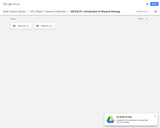
Geology is a core science, along with physics, chemistry, and biology. It uses rigorous methods of inquiry that illuminate the history of the earth and its present-day geological activity. Geology allows us to discover how earthŰŞs history and activity determine the state of the planet and its life forms. The study of geology also shows us how human behavior affects the earth. Topics we will cover include plate tectonics, earthquakes, volcanoes, rocks, minerals, geologic time, glaciers, rivers, geologic structures, layers of the earth, and reading maps. This course includes laboratory work and lab credit.Login: guest_oclPassword: ocl
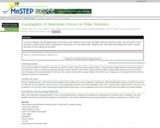
This model-making activity gives students an opportunity visualize Newtonian forces acting on a single point as well as combined forces acting to produce synclines and anticlines in Earth's crust. Students will analyze models to interpret findings of plate movements.
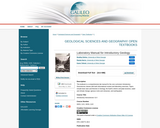
This textbook is a comprehensive lab manual for the core curriculum Introductory Geosciences classes with both informational content and laboratory exercises. Topics include basic laws and theories in Geology, the Earth's interior and plate tectonics, water and climate change, igneous rocks and volcanoes, and earthquakes.
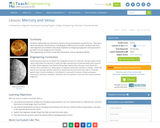
Students explore Mercury and Venus, the first and second planets nearest the Sun. They learn about the planets' characteristics, including their differences from Earth. Students also learn how engineers are involved in the study of planets by designing equipment and spacecraft to go where it is too dangerous for humans.

Students are introduced to the fabulous planet on which they live. Even though we spend our entire lives on Earth, we still do not always understand how it fits into the rest of the solar system. Students learn about the Earth's position in the solar system and what makes it unique. They learn how engineers study human interactions with the Earth and design technologies and systems to monitor, use and care for our planet's resources wisely to preserve life on Earth.
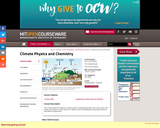
" This course introduces students to climate studies, including beginnings of the solar system, time scales, and climate in human history. It is offered to both undergraduate and graduate students with different requirements."
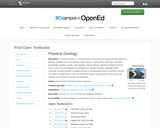
Physical Geology is a comprehensive introductory text on the physical aspects of geology, including rocks and minerals, plate tectonics, earthquakes, volcanoes, glaciation, groundwater, streams, coasts, mass wasting, climate change, planetary geology and much more. It has a strong emphasis on examples from western Canada, especially British Columbia, and also includes a chapter devoted to the geological history of western Canada. The book is a collaboration of faculty from Earth Science departments at Universities and Colleges across British Columbia and elsewhere.
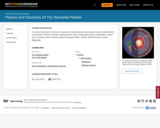
This course introduces the structure, composition, and physical processes governing the terrestrial planets, including their formation and basic orbital properties. Topics include plate tectonics, earthquakes, seismic waves, rheology, impact cratering, gravity and magnetic fields, heat flux, thermal structure, mantle convection, deep interiors, planetary magnetism, and core dynamics. Suitable for majors and non-majors seeking general background in geophysics and planetary structure.
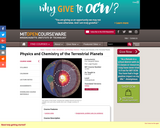
"This course introduces the structure, composition, and physical processes governing the terrestrial planets, including their formation and basic orbital properties. Topics include plate tectonics, earthquakes, seismic waves, rheology, impact cratering, gravity and magnetic fields, heat flux, thermal structure, mantle convection, deep interiors, planetary magnetism, and core dynamics. Suitable for majors and non-majors seeking general background in geophysics and planetary structure."
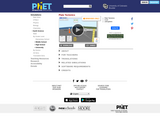
Explore how plates move on the surface of the earth. Change temperature, composition, and thickness of plates. Discover how to create new mountains, volcanoes, or oceans!